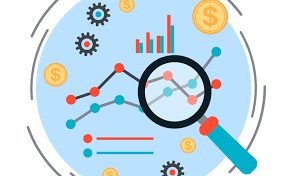The Art of Analysis: Unveiling Insights Beyond the Surface
Analysis is a powerful tool that allows us to delve deeper into complex issues, uncover hidden patterns, and gain a better understanding of the world around us. It involves breaking down information into its constituent parts, examining them closely, and drawing meaningful conclusions. Whether in the realms of science, literature, business, or everyday life, analysis plays a crucial role in shaping our perspectives and decision-making processes.
The Process of Analysis
At its core, analysis is about asking questions and seeking answers. It involves careful observation, critical thinking, and logical reasoning. By examining data, texts, or situations from multiple angles, analysts are able to piece together information like solving a puzzle. This process often involves identifying key components, evaluating relationships between them, and synthesizing findings to generate new insights.
The Importance of Analysis
Analysis is essential for making informed decisions in various fields. In business, market analysis helps companies understand consumer behavior and trends to develop effective strategies. In science, data analysis enables researchers to draw conclusions from experiments and observations. In literature, literary analysis uncovers themes and symbols that enrich our interpretation of texts.
The Role of Critical Thinking
Critical thinking is at the heart of effective analysis. It involves questioning assumptions, evaluating evidence objectively, and considering alternative perspectives. By cultivating critical thinking skills, individuals can approach problems with logic and reason rather than relying solely on intuition or preconceived notions.
Conclusion
Analysis is not just about breaking things down; it is about putting them back together in a way that reveals new insights and possibilities. By honing our analytical skills and embracing the complexities of the world around us, we can navigate challenges with clarity and confidence. So next time you encounter a problem or a question that piques your curiosity, remember the power of analysis in unlocking solutions and expanding your understanding.
9 Essential Tips for Effective Analysis
- Clearly define the objectives of the analysis.
- Gather relevant and accurate data for analysis.
- Use appropriate analytical tools and techniques.
- Ensure data quality by cleaning and validating it.
- Consider different perspectives when interpreting results.
- Document the analysis process and findings thoroughly.
- Communicate results effectively to stakeholders.
- Seek feedback from others to improve your analysis skills.
- Stay updated on new trends and technologies in analysis.
Clearly define the objectives of the analysis.
To conduct a successful analysis, it is crucial to clearly define the objectives of the process. By establishing specific goals and outcomes at the outset, analysts can focus their efforts on gathering relevant data, identifying key metrics, and interpreting results effectively. Clear objectives provide a roadmap for the analysis, guiding researchers towards meaningful insights and actionable conclusions. Without a well-defined purpose, analysis runs the risk of becoming unfocused and yielding ambiguous or irrelevant results. Therefore, articulating clear objectives is essential in ensuring that the analysis delivers valuable and targeted outcomes.
Gather relevant and accurate data for analysis.
To conduct effective analysis, it is crucial to gather relevant and accurate data. The quality of the insights derived from analysis heavily relies on the quality of the data input. By ensuring that the data collected is pertinent to the topic at hand and is reliable in its accuracy, analysts can make informed decisions and draw meaningful conclusions. Without a solid foundation of relevant and accurate data, the analysis may lead to flawed interpretations or misguided actions. Therefore, meticulous attention to sourcing and verifying data is essential in producing valuable analytical outcomes.
Use appropriate analytical tools and techniques.
When engaging in analysis, it is crucial to utilize the right analytical tools and techniques to ensure accuracy and efficiency. By selecting appropriate tools tailored to the specific nature of the data or problem at hand, analysts can enhance the quality of their insights and conclusions. Whether employing statistical methods, data visualization software, or qualitative research approaches, choosing the right tools can streamline the analysis process and lead to more robust outcomes. Adapting techniques to suit the context of the analysis can help uncover deeper patterns and connections that might otherwise remain hidden.
Ensure data quality by cleaning and validating it.
To conduct effective analysis, it is crucial to prioritize data quality by thoroughly cleaning and validating the information. By meticulously reviewing and refining the data sets, ensuring accuracy and consistency, analysts can enhance the reliability of their findings. Cleaning involves identifying and rectifying errors or inconsistencies within the data, while validation confirms that the information aligns with established standards and criteria. This meticulous process not only improves the integrity of the analysis but also fosters confidence in the conclusions drawn from the data.
Consider different perspectives when interpreting results.
When interpreting results, it is crucial to consider different perspectives to gain a comprehensive understanding of the data. By examining findings from various angles, one can uncover nuances, biases, and potential insights that may not be apparent at first glance. Taking into account diverse viewpoints allows for a more holistic analysis, leading to well-rounded conclusions and informed decision-making.
Document the analysis process and findings thoroughly.
It is crucial to document the analysis process and findings thoroughly to ensure clarity, transparency, and reproducibility. By documenting each step taken during the analysis, including data sources, methodologies used, and any assumptions made, researchers can provide a clear roadmap of how conclusions were reached. Additionally, thorough documentation allows others to validate the results, replicate the analysis, and build upon previous findings. This practice not only enhances the credibility of the analysis but also promotes accountability and trust within the research community.
Communicate results effectively to stakeholders.
Effective communication of analysis results to stakeholders is essential in ensuring that the insights gained are understood and utilized to their full potential. Clear and concise communication helps bridge the gap between complex data and actionable decisions, enabling stakeholders to grasp the significance of the analysis and its implications for their objectives. By presenting findings in a way that resonates with the audience’s needs and interests, analysts can foster trust, engagement, and collaboration, ultimately driving positive outcomes based on informed decisions.
Seek feedback from others to improve your analysis skills.
Seeking feedback from others is a valuable strategy for enhancing your analysis skills. By inviting perspectives and insights from different individuals, you can gain fresh viewpoints that may uncover aspects of the data or information that you might have overlooked. Constructive feedback not only helps you identify potential blind spots in your analysis but also encourages continuous learning and growth. Embracing feedback as a tool for improvement can refine your analytical approach and ultimately lead to more robust and insightful conclusions.
Stay updated on new trends and technologies in analysis.
To excel in analysis, it is crucial to stay informed about the latest trends and technologies in the field. By keeping up-to-date with advancements, tools, and methodologies, analysts can enhance their skills and adapt to evolving challenges. Embracing new trends not only expands one’s analytical toolkit but also opens doors to innovative approaches that can lead to more insightful interpretations and solutions. Continuous learning and exploration of emerging technologies ensure that analysts remain at the forefront of their field, ready to tackle complex problems with efficiency and precision.



